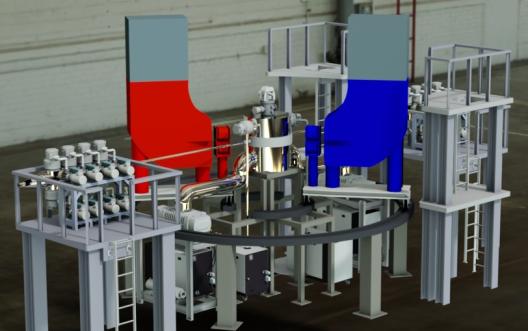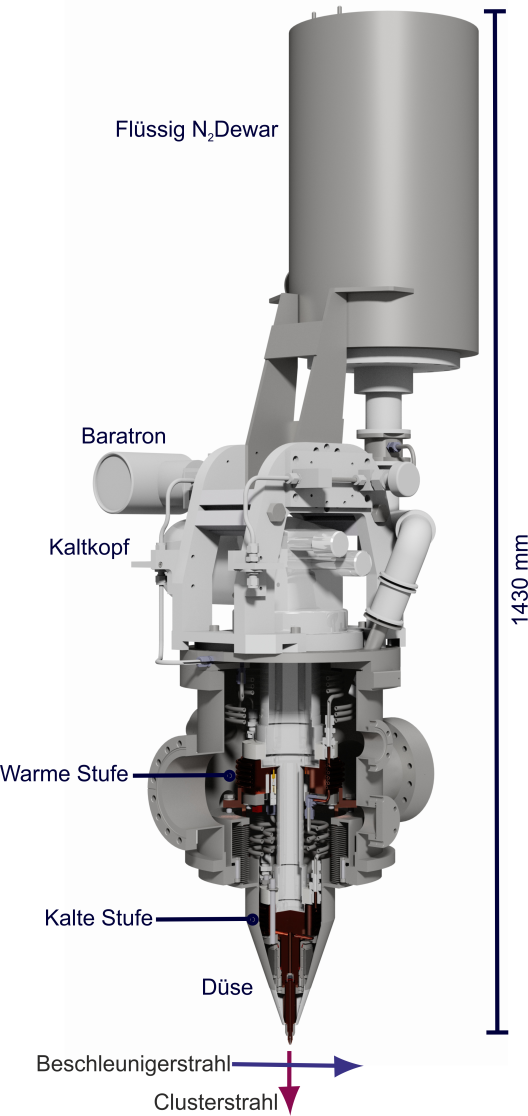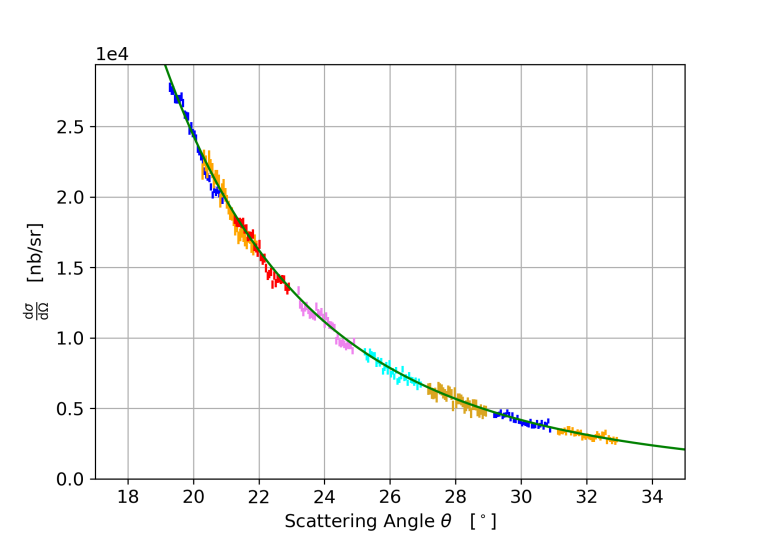The MAGIX-Experiment
The future electron accelerator MESA (Mainz Energy-recovering Superconducting Accelerator) at the Johannes Gutenberg University Mainz focuses on investigations to verify the Standard Model of particle physics. Thereby, the main topics are the search for dark photons, which are candidates for dark matter, and precision measurements of fundamental constants, such as the proton radius or the electroweak mixing angle (Weinberg angle). Since 2017, the first components of the accelerator MESA are tested and by 2023 the complete system will be fully operational.
The MAGIX-Experiment (MESA Gas Internal target eXperiment) is located in the energy-recovering sector of the accelerator. There, energies up to 105 MeV with a beam current of 1 mA can be achieved. MAGIX is a fixed-target experiment with high luminosity (1035 cm-2 s-1), which consists of a gas-jet as a target and a multi-purpose spectrometer as a detector. The following figure shows the interaction point of the horizontal electron beam and the vertical gas-jet. Moreover, the two magnetic spectrometers are shown which can move in a circular path around the interaction point and measure the angles and momenta of the scattered electrons.


Gas targets continuously provide target material with constant density, which are stable for several weeks. Directly behind the nozzle densities in the order of 1019 atoms/cm2 can be achieved. The gas-jet target offers the possibility to be operated in a cluster-jet mode. This can be realized by changing the pressure and temperature of the gas at the nozzle (see cluster-jet target). The used gas-jet target was designed and built up in this working group.
Since summer 2017 the MAGIX target is operated at the A1 experiment in Mainz. This consists – similar to the future MAGIX experiment – of three magnetic spectrometer and is located within the Mainz Microtron (MAMI). There experiments about the elastic scattering of an electron beam with protons from the gas target are performed. With these first measurements, information about the performance of the MAGIX target in combination with an electron accelerator can be gained and possible improvements (target, scattering chamber, pumping system, beam line) can be discovered to guarantee a seamless start of operation later at MESA.
At MAMI the gas-jet can be scanned by the electron beam, so that from these measurements the shape and also the absolute thickness of the jet can be extracted. Furthermore, also first measurements on the proton radius are performed, since here results from different measurement show large discrepancies (“proton radius puzzle”). The proton radius can be extracted from the differential cross section at different beam energies. This measured cross section is shown in the following figure for different angles at one beam energy.

